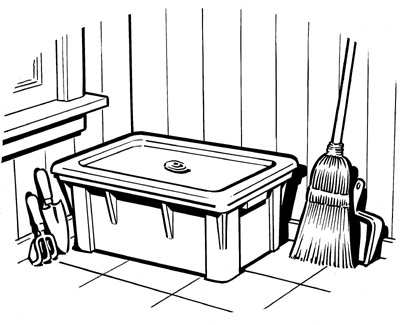Worm Composting
Worm composting is a great way to turn your food scraps into a nutrient-rich fertilizer that can be used for house and garden plants (learn more about using compost in your garden). A pound of red worms can eat 65 pounds of food scraps in less than three months!
Worm composting only works for food scraps, so if you want to compost plant trimmings you should check out our backyard composting section. Worm bins are generally much smaller than backyard compost bins, so they're a good option for households with limited space.
Helpful tips for worm composting:
1. Get a worm bin
Build a bin out of wood, or by using a plastic tote, an old dresser drawer, shipping crate, or barrel. Your bin needs to be 10 to 16 inches deep, have holes in the bottom or sides for ventilation, and have a snug-fitting lid. To keep rodents out, the holes need to be 1/4 inch or smaller. The rule of thumb for bin size is two square feet of surface area per person. An average two-person house would need a bin about 4 square feet, or two bins that are 2 square feet each.
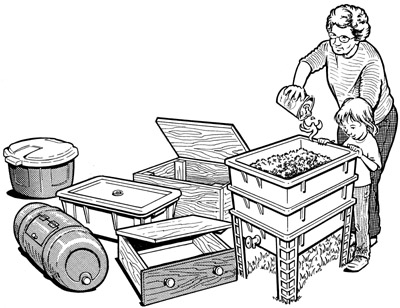
2. Pick a place
Locate your bin where it will not freeze or overheat—in a pantry, kitchen corner, laundry room, garage, basement, patio, deck, or in your garden. Make sure to put it in a shady spot as direct sunlight can heat up a worm bin and kill the worms. During winter, it is important to provide protection from rain or frost. Worm bins are often placed in garages, under decks, or in basements.
3. Make a worm bed
Worms like to live under lots of moist paper or leaves. This helps keep them cool and moist, gives them fiber to eat, and prevents fruit flies from getting to their food. To make your worm bed, tear black and white newspapers into one-inch strips, fluff them up, then moisten them with a spray bottle so they are completely wet but not dripping. Fill your bins three-quarters full with this moist bedding. Shredded cardboard, leaves, compost, sawdust, and straw can also be added in as bedding. Do not use glossy paper or magazines. Sprinkle bedding with a few handfuls of soil.
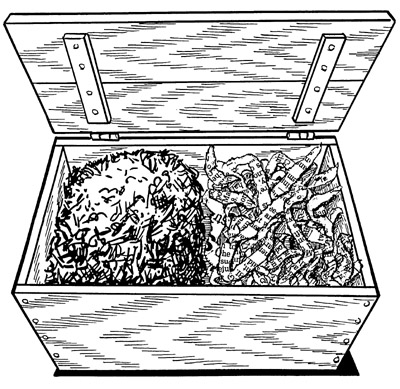
4. Adopt some worms
Compost worms are often called "red worms" or "red wigglers." Their scientific name is Eisenia fetida. They are different from earthworms and nightcrawlers, which live underground. You can find red wigglers in an old compost pile, get them from a friend's worm bin, or buy them from a worm farm. Start with one half to one pound of worms, or two nice big handfuls.
Compost worm sources in the Bay Area:
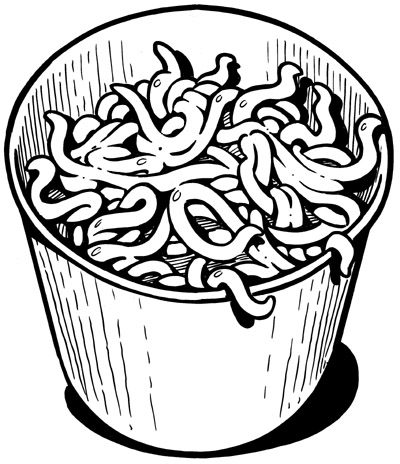
5. Feed your worms
Give your worms about a quart (one pound) of fruit and vegetable trimmings, then leave them alone for a couple of weeks while they get used to their new home. After that, feed your worms about a quart of food scraps per square foot of surface area in your bin per week. To avoid fruit flies and odors, bury food under the bedding. Learn more about what you can put in your worm bin, click here.
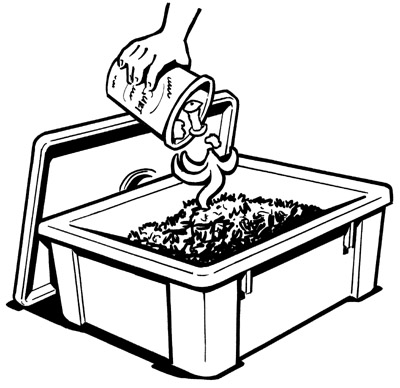
6. Maintain your worm bin
Always keep a 4- to 6-inch layer of fresh bedding over the worms and food in your bin. Add fresh bedding every time you feed the worms. Keep bedding as moist as a wrung-out sponge. In a plastic bin, add dry bedding to absorb excess moisture. Wooden bins may require adding water occasionally.
7. Harvest and use your worm compost
You can start harvesting worm compost 2 to 3 months after you set up your bin. Simply reach in and scoop out the brown crumbly compost, worms and all. You can also move the contents of the bin to one side, place fresh bedding and a handful of soil in the empty space and bury food there for a month or two. Harvest the compost after the worms have migrated to the new food and bedding. Harvest at least once a year to keep your worms healthy. Learn how to use finished worm compost in your garden, click here.
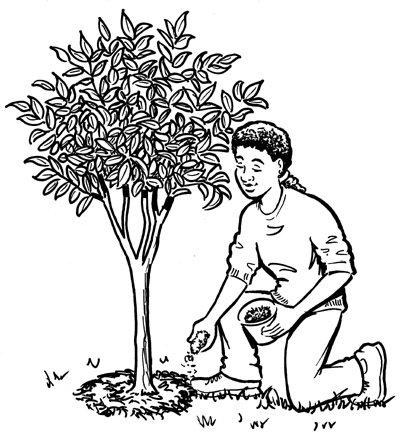
Related Resources
Learn more about building healthy soil with this guide that provides tips to help you get started in your garden. It covers soil building strategies including composting, sheet mulching and cover cropping.
This in-depth guide can answer all of your compost questions. Whether you are an urban farmer, community gardener, or a backyard homesteader, this toolkit supports you in becoming an expert composter.
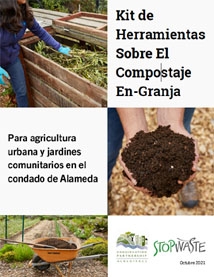
El objetivo de este kit de herramientas es proporcionar un enfoque práctico paso a paso para los agricultores urbanos de cualquier escala para comenzar el compostaje en la granja agrícola, evaluar y mejorar el sistema existente, y convertirse en maestros compostadores.
